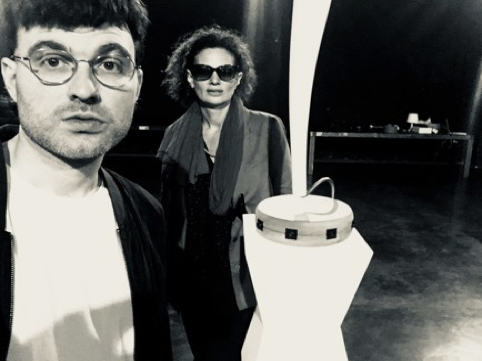
On pourrait donc dire que la pièce a été decouverte dans une grotte datée d’environ 100 000 ans, à Cova Santa Marza , dans l’ile d’ibiza , lors de fouilles récentes déclenchées par la baisse du niveau d’eau dans la cavité la plus profonde de la grotte . que les chercheurs et archéologues n’ont pas réussi jusqu’à aujourdhui à en faire une datation cohérente .
On pourrait donc aussi dire qu étant donné qu’Ibiza a servi de Necropole aux Carthaginois et qu’ils ont vénéré la déesse Tanit , la pièce pourrait etre une représentation d’un culte spécifique qui lui était dédiée , mais la présence d’une technologie rélativement récente dans la partie supérieure de la sculpture, qu’on a nommé “la couronne” , contredit cette hypothèse.
On pourrait dire enfin que l’on retrouve typiquement dans la pièce les caractéristiques des premiers artefacts minéraux puis humains, à savoir la Verticalité du Shiva lingam , la pierre phallus, symbolique de la verticalité de Sapiens, et dont nous aurons des multiples variations plus tard depuis l’art précolombien jusqu’à la colonne de Brancusi ou le porte bouteille de Duchamp / la comtesse de M .
Le constat serait donc simple, s’il n’agitait pas les théories les plus extravagantes, il s’agit d’un objet inconnu, probablement de culte On pourrait dire que les théroies UFO et extraterrestres ne sont pas complètement absurde à son sujet .
In Project Sonic Totem, Parisian bassist/sound technologist Floy Krouchi and New York saxophonist Devin Brahja Waldman pair up to explore the question of how technology can offer dynamic meaning in our lives. By extending the ancient symbol of the totem into hi-tech zones, the project aims to create a sonic experience where computer science, contemporary aesthetics and the concept of ritual all merge.
During a 2017 and 2018 residency at the Hangar research center in Barcelona, Krouchi designed a sensile receptacle/sound transmitter named the “Sonic Totem.” Programmable to respond according to proximity of one’s movement, the Totem serves as a versatile tool of real-time interaction. The Totem also operates as a database for sound sources from around the world. From spoken word to diverse noises and melodic/rhythmic fragments which are uploaded to the Totem,
this unique device may be thought of as an interactive archive which replies to the sounds and gestures of the performer. A third function of the Totem is to transform live sound. Performing the role of a monolithic pedal board with sonic parameters set by Krouchi herself, the Totem’s sound effects bind themselves to the performers’ instruments, capable of transmuting a live signal in innumerable variations.
In their live performance, Krouchi and Waldman present an investigation of each of the three above functions of the Totem. Examining movement, sound and archive alike, this work regards the Totem as collaborator as well as Muse. Krouchi and Waldman’s compositional approach in this piece combines elements of minimalism, repetition, experimentalism, transe, improvisation and indeterminate music.
With floating rhythms which periodically burst in furious color, Project Sonic Totem positions itself somewhere between the dynamic sound worlds of Morton Feldman and Bad Brains. The composition’s slowly-evolving sonic patterns may be looked at as incantations warming up an oracle. In the piece’s crescendo, the Totem answers through its randomized function, where not even the composers are privy to what it will do.

Biennale DREAM CITY in Tunis, October 2019
Languages: Tunisian & French
CONCERT/PERFORMANCE: 7 OCT. at 20:00 hrs